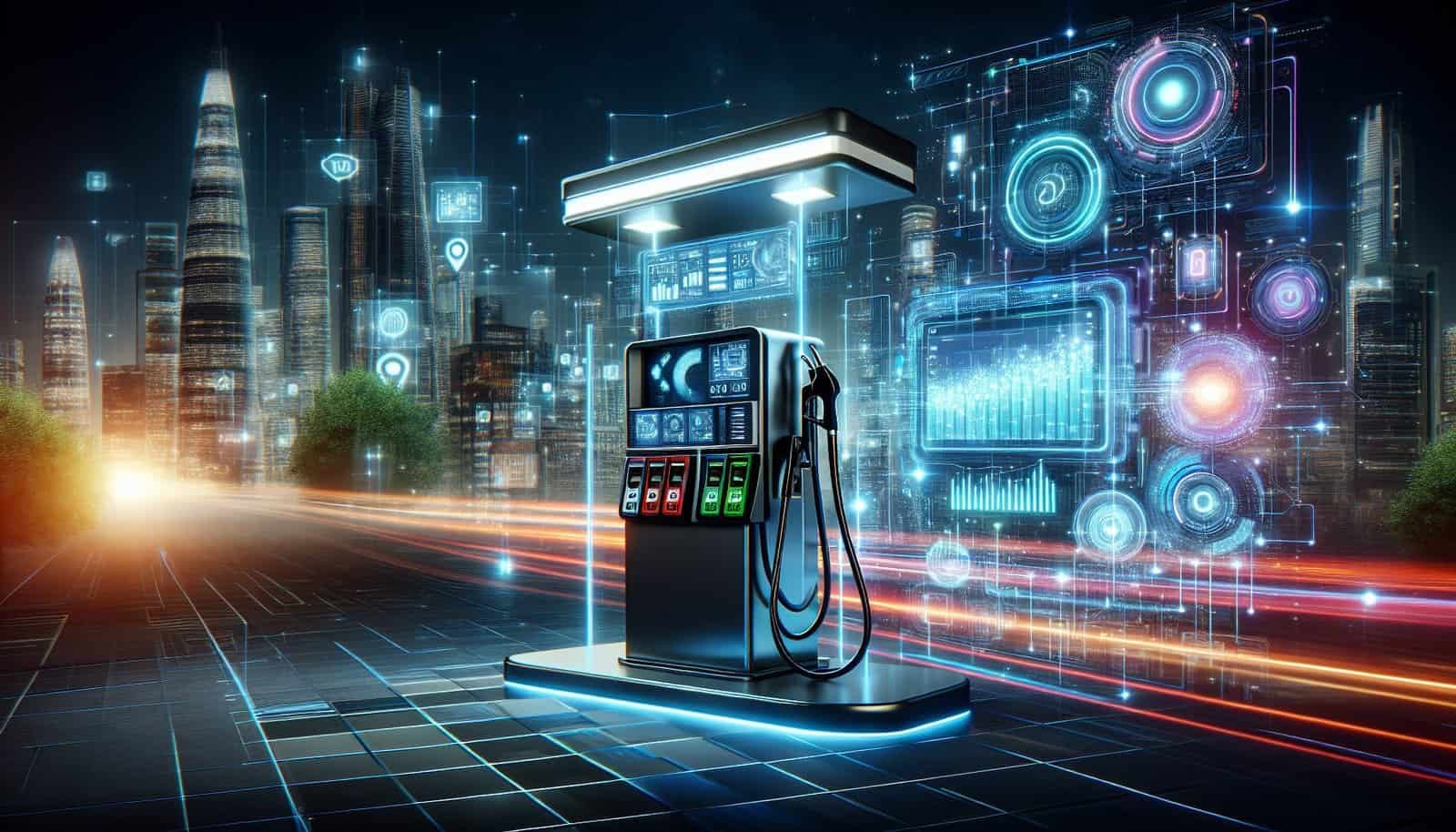Have you ever found yourself frustrated by the unpredictable and often exorbitant gas fees associated with cryptocurrency transactions? If so, you’re not alone. Many who venture into the world of digital currency quickly learn that managing these seemingly unavoidable charges can be a challenging task. But what if you had the tools to optimize these fees, potentially saving you considerable amounts of money over time? This is where a gas fee optimizer can become your best ally.

Understanding Gas Fees
What Are Gas Fees?
In the cryptocurrency universe, gas fees are a vital component. They are essentially transaction fees paid by users to validators on a blockchain for their participation in securing and processing transactions. These fees help incentivize miners and validators to include your transaction in the blockchain, ensuring that your transaction is both processed and secured efficiently. It’s important to grasp that without these fees, the decentralized nature of blockchain networks couldn’t function as effectively, since they’d lack the funding to maintain operational security.
Why Do Gas Fees Exist?
Gas fees exist primarily to prevent network abuse and ensure that only legitimate transactions take place. By imposing a cost on every transaction, the blockchain network effectively discourages users from spamming the system with frivolous transactions. It’s a powerful mechanism that ensures that resources are allocated efficiently and legitimately. Moreover, these fees serve as compensation for the computing power required to verify and record transactions, which in turn helps maintain the integrity and security of the entire blockchain network.
Variability of Gas Fees
One of the more perplexing aspects of gas fees is their variability. Unlike traditional fees in the banking industry, gas fees can change dramatically within just a few minutes. Numerous factors contribute to these fluctuations, such as network congestion, the complexity of the transaction, and even the token type involved. When the network is experiencing high demand, fees can skyrocket, whereas during quieter periods, the costs might drop. Understanding these dynamics can help you time your transactions better, potentially saving you money.
Gas Fee Optimization: Why It Matters
Savings Over Time
Optimizing gas fees is not just about saving a handful of pennies. Over time, the cumulative savings can be substantial, especially for those who frequently engage in cryptocurrency trading or transactions. By employing effective optimization strategies, you can manage your digital assets more efficiently, enhancing your financial returns without compromising on transaction speed or security. This is particularly crucial for businesses that make multiple transactions daily.
Maximizing Investment Returns
When transaction costs are reduced, your overall investment returns can increase. Imagine conducting hundreds or even thousands of transactions over a year; the savings can be quite significant. Moreover, with lower transaction costs, you may find that you have more leeway to make more or larger transactions, which could potentially lead to greater investment returns. It’s a cycle of increased efficiency leading to improved financial outcomes.
How to Optimize Gas Fees
Timing Your Transactions
One of the simplest yet effective ways to optimize gas fees is by timing your transactions wisely. Since gas fees fluctuate based on network demand, executing your transactions during off-peak hours can result in reduced costs. Generally, weekends or late night (based on UTC) are ideal times to transact. By doing a little research and monitoring the network’s activity, you can identify periods when fees are lower, ensuring that you’re not spending more than necessary.
Using Gas Fee Estimation Tools
There are various tools available that can help you estimate gas fees in real-time. These tools take into account current network conditions, helping you get a better sense of what you might expect to pay. By using these resources, you can make more informed decisions about when to conduct your transactions. Some popular tools include EthGasStation and GasNow, which provide detailed insights into the gas fees across different networks.
Setting Gas Price Limits
Most digital wallets allow you to set a maximum price you’re willing to pay for gas, which can be an effective way to control costs. This feature allows your transaction to be processed only when the network can accommodate it at your specified rate. By setting a limit, you avoid the surprise of overpaying during high congestion periods, though bear in mind it might mean your transaction takes longer to process.
Tools and Platforms for Gas Fee Optimization
MetaMask
MetaMask provides a flexible platform for managing and optimizing your gas fees. Within the MetaMask interface, you can adjust gas price settings and access real-time data on current fee averages. This customization ability makes it easier for you to balance speed and cost, optimizing your transactions based on your priorities. MetaMask’s user-friendly approach makes it ideal for both beginners and more experienced users.
MyCrypto
MyCrypto is another platform offering customization for gas fees, providing a feature-rich environment for transaction management. With MyCrypto, you not only get to adjust gas prices, but you also have access to transaction tracking and detailed analytics. These features empower you to optimize each transaction with precision, ensuring you only pay what’s necessary to get your transaction confirmed in a timely manner.
Ethereum Gas Station
Ethereum Gas Station delivers comprehensive information on the Ethereum network’s gas fees. By using this tool, you gain access to historical and current gas price data, enabling you to plan your transactions with greater accuracy. This platform gives you a bird’s-eye view of network conditions, helping you determine the optimal time and gas price to send your transaction without overpaying.

Pros and Cons of Gas Fee Optimization Strategies
Advantages
Cost Savings: The most apparent advantage is the potential cost savings, which can be substantial over time.
Efficiency: By optimizing fees, you’re ensuring your transactions are processed efficiently, avoiding unnecessary delays.
Control: Having control over how much you’re willing to pay gives you the opportunity to manage your digital finances more effectively.
Challenges
Timing Sensitivity: The need to time transactions can be cumbersome and doesn’t guarantee success if the network demand shifts unpredictably.
Technical Complexity: Some optimization strategies may require a deeper understanding of blockchain technology and transaction mechanics.
Delayed Transactions: Attempting to save on fees might result in longer transaction times, especially if the network remains congested.
The Impact of Blockchain Enhancements on Gas Fees
Scalability Solutions
Blockchain scalability solutions, like Ethereum’s ongoing upgrades, aim to reduce congestion and improve transaction speeds. These enhancements often lead to lower gas fees as the network becomes more efficient and capable of handling higher transaction volumes without delays. Keeping informed about upcoming blockchain improvements can offer insights into future fee structures, helping you plan your transactions proactively.
Layer 2 Solutions
Layer 2 solutions, such as Optimistic Rollups and zk-Rollups, are designed to process transactions off the main blockchain network, later consolidating them for confirmation. By using Layer 2 solutions, you can benefit from lower gas fees, as these systems reduce the load on the main blockchain. This is a progressive step toward a more efficient and affordable transaction system, and being aware of these solutions can give you a significant edge in managing gas fees.
Impacts of Network Updates
Network updates, such as Ethereum’s transition from proof of work (PoW) to proof of stake (PoS), are pivotal in altering gas fee dynamics. By switching to a PoS model, Ethereum aims to enhance scalability and reduce transaction fees. Adapting to these changes and understanding their implications can provide you with a competitive advantage, allowing you to optimize your gas fees effectively in response to evolving network protocols.

Expert Tips for Mastering Gas Fee Optimization
Stay Informed
Regularly follow news and updates in the cryptocurrency space that can impact gas fees. Developments in technology, regulatory changes, and network updates can significantly affect transaction costs. Staying informed ensures you’re always equipped with the latest strategies to handle any shifts in fee structures effectively.
Community Engagement
Engage with online communities, forums, and social media groups where enthusiasts and experts discuss gas fee strategies. The collective knowledge within these groups can provide you with practical tips and insights that might not be readily available through other avenues. Active participation not only broadens your understanding but can also introduce you to innovative methods for optimizing fees.
Experiment and Adapt
Every user has unique transaction needs and patterns. Don’t shy away from experimenting with different optimization strategies to discover what works best for your specific situation. Evaluate the success of various methods and be ready to adapt your approach based on results and changing conditions. Over time, this habit of experimentation and adaptation will refine your strategy, contributing to more efficient and cost-effective transactions.
In navigating the complex yet fascinating terrain of cryptocurrency, mastering gas fee optimization can offer both immediate cost savings and long-term financial benefits. By understanding the intricacies of gas fees, employing effective optimization tools, and staying engaged within the community, you equip yourself with the knowledge and resources to conduct digital transactions with confidence and ease. Make these strategies your own, and empower your financial journey in the world of blockchain.

